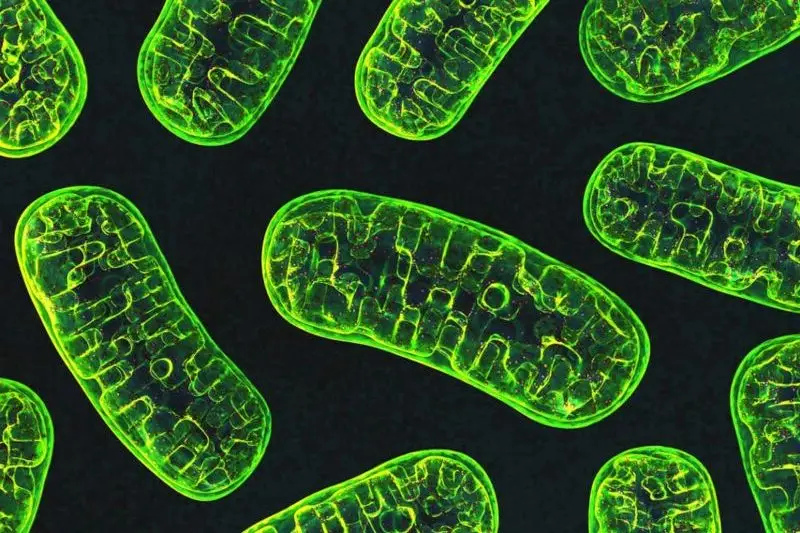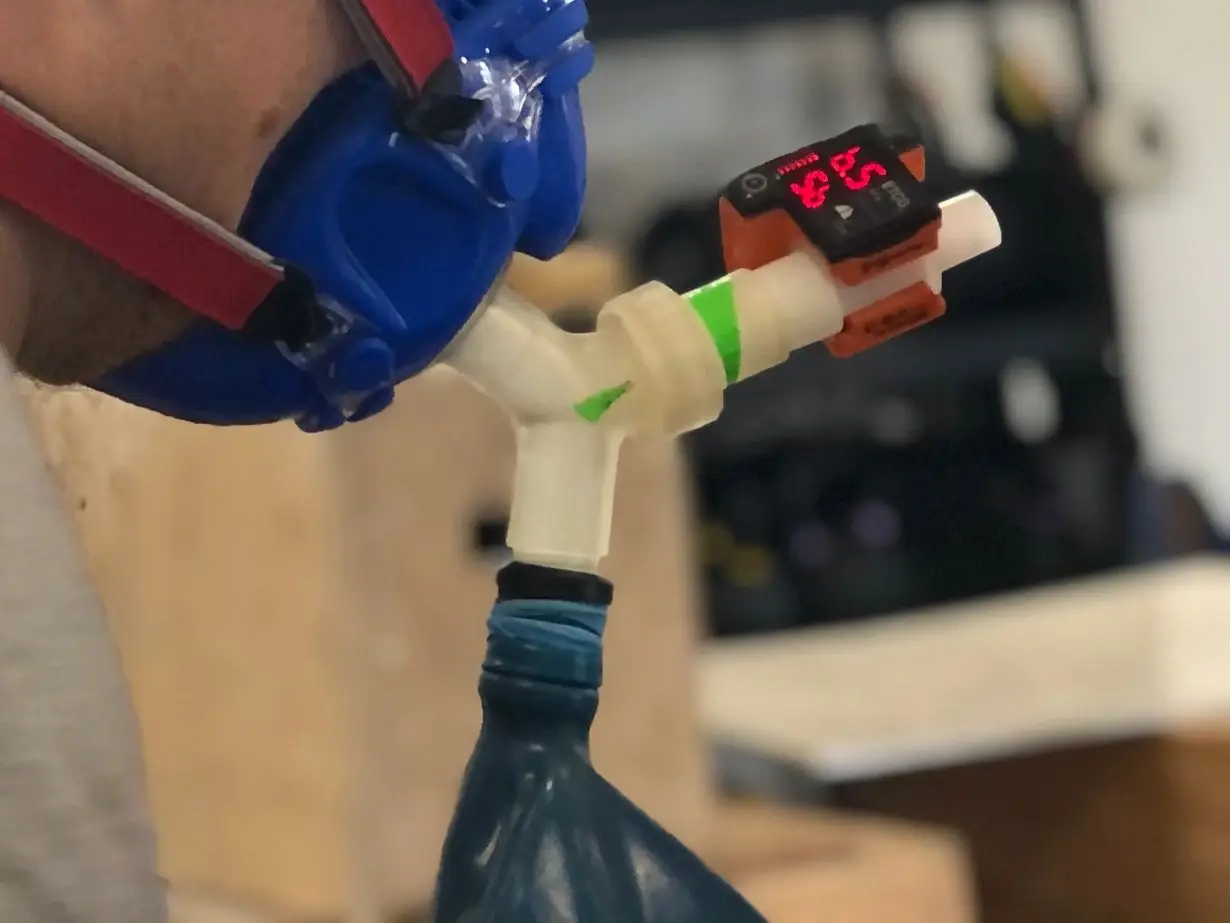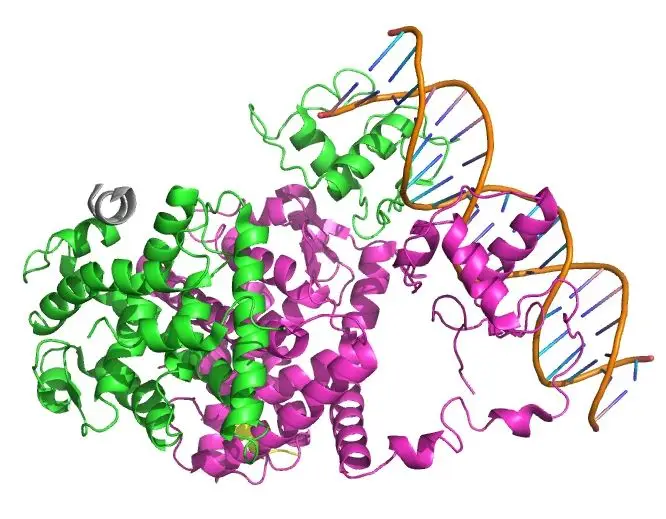Today, we delve into a fascinating realm at the intersection of respiratory science and cellular biology – exploring the potential connection between controlled hypercapnia and mitochondrial biogenesis. Let’s unravel the intricate relationship between controlled hypercapnia and the stimulation of new mitochondria (the energy factories within your muscles).

Why Do We Care About Mitochondria:
Mitochondrial biogenesis, the creation of new mitochondria in cells, is crucial for athletes because it directly impacts their energy levels, endurance, and recovery. Mitochondria are like cellular power plants that produce energy for muscles. When athletes have more mitochondria, they can generate more energy, supporting both immediate and sustained performance during exercise.
Having a higher number of functional mitochondria also helps athletes use oxygen more efficiently, which is essential for activities like running or cycling. This efficiency delays fatigue and improves overall endurance, making it particularly valuable for sports that require prolonged aerobic efforts.
Mitochondrial biogenesis plays a vital role in recovery. Athletes often experience muscle damage during workouts, and having more mitochondria supports the body’s repair mechanisms, helping them recover faster between training sessions. This adaptive response is crucial for athletes aiming to optimize their training and perform at their best.
Understanding Mitochondrial Biogenesis:
Mitochondria, often referred to as the “powerhouses of the cell,” play a pivotal role in energy production. Mitochondrial biogenesis is the process by which new mitochondria are formed within a cell. This phenomenon is not only crucial for improving cellular energy production but also for various other cellular functions, including cell signaling, regulation of the cell cycle, and apoptosis (the process of programmed cell death).
The Link with Controlled Hypercapnia:
Controlled hypercapnia, a state of elevated carbon dioxide (CO2) levels within the body, is one of the more advanced ways of using the Isocapnic Breathe Way Better. It involves deliberately exposing the body to controlled increases in CO2 levels while maintaining normal oxygen levels. This controlled exposure stimulates adaptive responses within the respiratory system and other systems.
Research has suggested that controlled hypercapnia may have a direct impact on cellular processes, including mitochondrial biogenesis(1). The underlying mechanism lies in the fact that mitochondria are sensitive to changes in cellular oxygen and CO2 levels. In conditions of controlled hypercapnia, cells may activate pathways that enhance mitochondrial biogenesis as a response to the altered physiological environment.
The Cellular Signaling Pathways:
Several cellular signaling pathways have been implicated in the relationship between controlled hypercapnia and mitochondrial biogenesis. One key player is the peroxisome proliferator-activated receptor gamma coactivator 1-alpha (PGC-1α), a master regulator of mitochondrial biogenesis. Studies have suggested that PGC-1α expression may be upregulated in response to increased CO2 levels, subsequently promoting the synthesis of new mitochondria.
Furthermore, the AMP-activated protein kinase (AMPK) pathway, known for its role in energy homeostasis, has been linked to both hypercapnia and mitochondrial biogenesis. The interplay of these signaling pathways presents a complex but intriguing frontier where respiratory training may serve as a catalyst for cellular adaptations.
Practical Implications for Respiratory Training:
For Isocapnic Inc. and the users of BWB, this emerging understanding holds significant promise. If controlled hypercapnia indeed proves to enhance mitochondrial biogenesis, it could contribute to improved respiratory efficiency, endurance, and overall physiologic resilience.

The Isocapnic Breathe Way Better Device:
We know that the Isocapnic Breathe Way Better (BWB) is a respiratory training tool that controls your CO2 levels and we know that, under the right supervision, you can use the Breathe Way Better to introduce controlled hypercapnia. The device, designed with precision and effectiveness in mind, could potentially serve as a valuable tool for individuals seeking to harness the benefits of increased CO2 levels for respiratory development and mitochondrial biogenesis.
Practical Tips for Optimizing BWB Respiratory Training:
- Gradual Progression: As with any training regimen, a gradual and progressive approach is key. Users of the Breathe Way Better device should start with moderate to light parameters and gradually increase intensity over time to allow for adaptation.
- Consistency Matters: Regular and consistent use of the device with these protocols are crucial for sustained benefits. Integrating Isocapnic respiratory training into a routine can optimize the adaptive responses within the respiratory and cellular systems.
- Individualized Approach: Recognizing that individuals may respond differently to controlled hypercapnia, a personalized approach to respiratory training is recommended. This may involve adjusting training parameters based on individual needs and goals. We recommend you contact one of our trusted training centers to start that conversation on how you can safely integrate hypercapnic training (HCT) into your training schedule.
In the quest for enhanced respiratory function and overall well-being, the exploration of controlled hypercapnia’s potential impact on mitochondrial biogenesis opens a new chapter. As Isocapnic Inc. develops programs to support the use of the Breathe Way Better device, the journey toward optimizing respiratory training becomes both exciting and full of potential.
Citations:
While the specific intersection of controlled hypercapnia and mitochondrial biogenesis is a nuanced area of research, there are studies that provide insights into related topics, such as respiratory training, CO2 modulation, and mitochondrial function. Here are a few key studies that contribute to the understanding of these interconnected fields:
1. “Protection of Myocardial Ischemia–Reperfusion by Therapeutic Hypercapnia: a Mechanism Involving Improvements in Mitochondrial Biogenesis and Function”
- Authors: Chi, L., Wang, N., Yang, W. et al.
- Published in: J. of Cardiovasc. Trans. Res.
- Link
2. “Hypercapnia alters mitochondrial gene expression and acylcarnitine production in monocytes”
- Authors: D. E. Phelan, C. Mota, M. J. Strowitzki et al.
- Published in: J. of Australian & New Zealand Soc. for Immunology
- Link
3. “Stress response in chronic hypercapnia”
- Authors: KE Schaefer, N McCabe, and J Withers
- Published in: American Journal of Physiology
- Link
Please note that while these studies may not directly address the controlled hypercapnia and mitochondrial biogenesis link, they provide foundational knowledge on respiratory training, mitochondrial function, and related physiological responses. As research in this specific area continues to evolve, keeping an eye on recent publications will be crucial for staying abreast of the latest developments.




